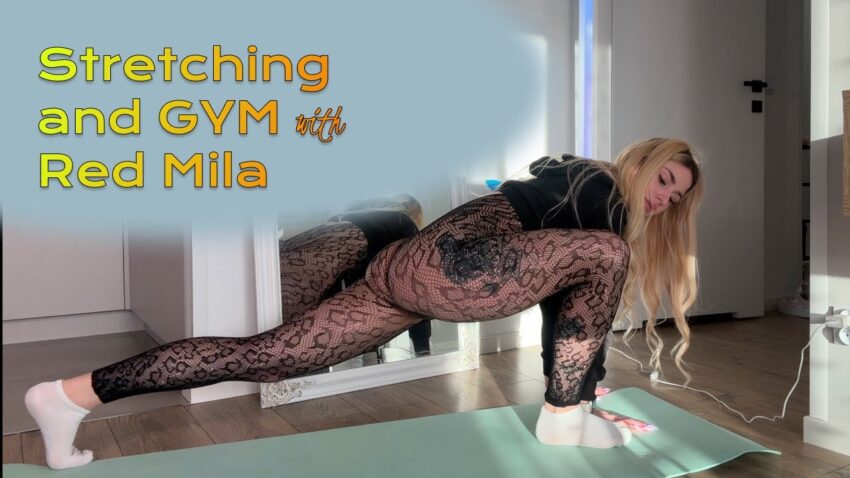There are two main types of stretching that are commonly practiced in the gym: dynamic and static. Both serve different purposes and should be incorporated at the appropriate times during your workout.
1. Dynamic Stretching:
Dynamic stretching involves controlled, smooth movements that help warm up your muscles before a workout. These stretches are generally active, meaning they incorporate movement through a full range of motion, preparing your muscles for exercise.
Examples of dynamic stretches:
- Leg swings: Forward and backward leg swings help loosen up the hips and legs.
- Arm circles: These activate the shoulders and upper body muscles.
- Lunges with a twist: This opens up the hips and stretches the legs, while also engaging the core.
- High knees: This exercise activates the lower body, especially the quads, hips, and calves.
When to do it: Dynamic stretches should be performed before starting your workout to warm up your body and prepare your muscles for more intense activity.
2. Static Stretching:
Static stretching involves holding a stretch for a prolonged period, typically around 15 to 60 seconds. This type of stretching helps to improve flexibility and relax the muscles after a workout. Static stretching is most effective when your muscles are already warm.
Examples of static stretches:
- Hamstring stretch: Sitting or standing, gently reach for your toes to stretch the hamstrings.
- Quad stretch: Standing and pulling one ankle toward your glutes to stretch the front of the thigh.
- Child’s pose: A yoga stretch that targets the back and hips.
- Cobra stretch: Lying on your stomach and pushing up onto your hands to stretch the abs and lower back.
When to do it: Static stretches should be performed after your workout, during the cool-down phase, to promote muscle relaxation and recovery.
How to Incorporate Stretching into Your Gym Routine
Incorporating both dynamic and static stretching into your workout routine will optimize your flexibility and injury prevention. Here’s a basic guide on how to integrate stretching into your gym workouts:
Before Your Workout:
- Begin with 5-10 minutes of light cardio, such as walking on a treadmill or cycling, to raise your heart rate and get your blood flowing.
- Perform dynamic stretches that target the muscles you will be using during your workout. For example, if you’re doing leg exercises, focus on hip and leg swings, lunges, or high knees.
During Your Workout:
- Maintain proper form during exercises to avoid unnecessary strain on muscles or joints.
- Take short breaks between sets to perform light, dynamic stretches, especially if you’re doing high-intensity exercises.
After Your Workout:
- Cool down by reducing the intensity of your exercise gradually.
- Spend 5-10 minutes performing static stretches for all major muscle groups, holding each stretch for 15-60 seconds. Focus on areas that feel tight or fatigued.
Key Stretching Tips for Maximum Benefits
- Don’t Overstretch: Stretching should never cause pain. If you feel pain, back off and try again gently.
- Consistency Is Key: Stretching regularly, not just before or after workouts, will give you the best long-term results.
- Breathe Deeply: While stretching, focus on deep breathing to help relax the muscles and improve circulation.
- Target All Major Muscle Groups: Stretching only a few muscle groups leaves others neglected. Ensure your stretching routine is balanced and targets the entire body.
